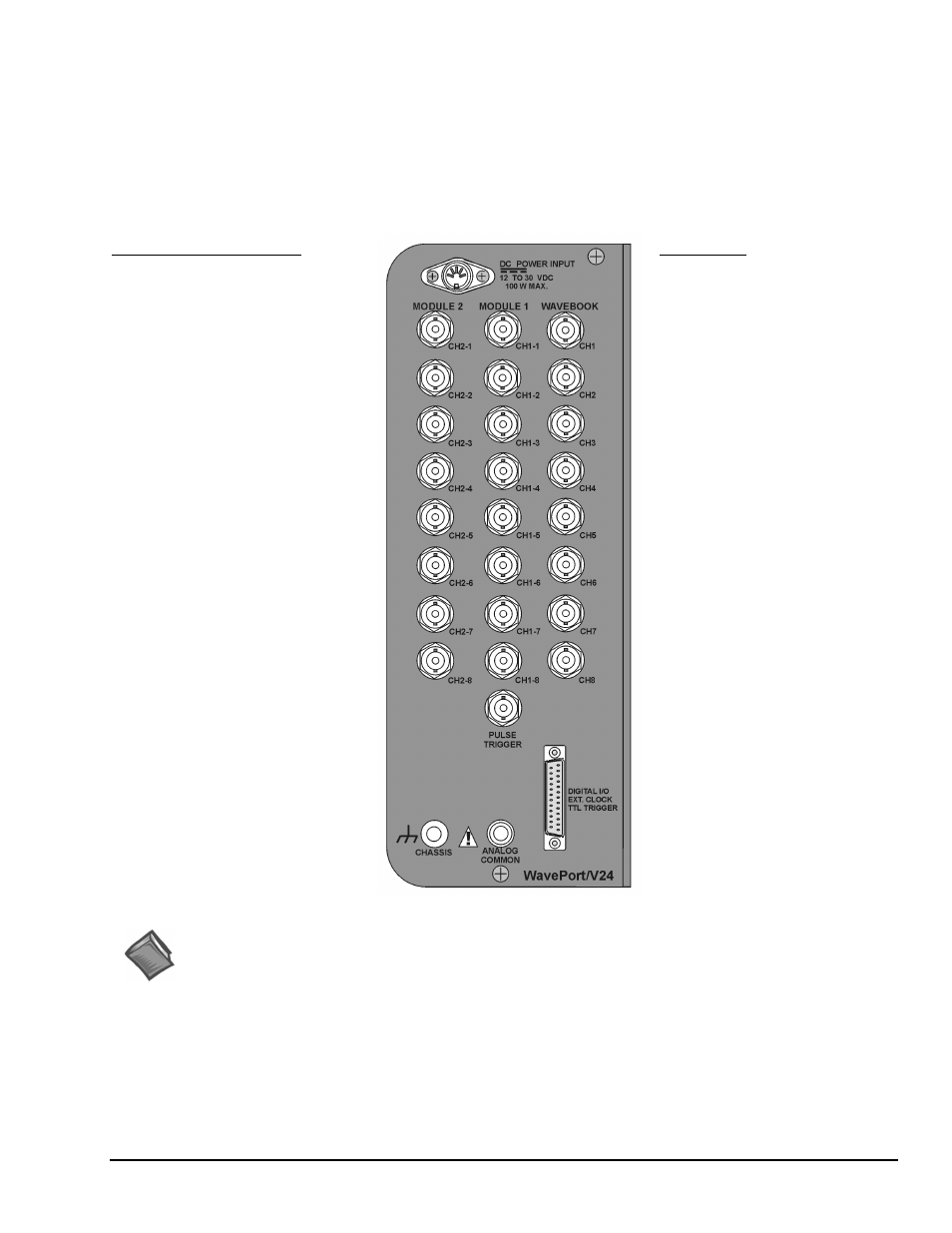Measurement Computing WavePort rev.3.0 User Manual
Page 17

WavePort User’s Manual
09-29-00
An Introduction to WavePort 2-7
WavePort/V24
WavePort/V24 can measure up to 24 channels of voltages within ±10V.
The unit receives its channel-input signals through three columns of eight BNC connectors (24 channel inputs total). The
columns are labeled [from left to right] MODULE 2, MODULE 1, and WAVEBOOK. In addition to the channel-input
BNCs, WAVEBOOK contains a BNC for PULSE Trigger Input (see following figure).
The signal panel includes a DB25 connector for DIGITAL I/O, EXT CLOCK (external clock), and TTL TRIGGER.
Connection nodes for CHASSIS (ground) and ANALOG COMMON are also provided.
WaveBook
Analog Inputs
CH1 through CH8, Analog Inputs via
BNC Connectors.
• 16 bit resolution
• Software selectable for unipolar or
bipolar operation
• Unipolar Ranges
0 to +10V
0 to + 4V
0 to +2V
• Bipolar Ranges
±10V, ±5V, ±2V, ±1V
• Maximum Overvoltage: ±30 VDC
DC-Coupled Only,
Fully Differential
Module 1 and Module 2
Analog Inputs
CH1-1 through CH1-8, and
CH2-1 through CH2-8, respectively.
• 16 bit resolution
• Software selectable for unipolar or
bipolar operation
• Unipolar Ranges
0 to +10V
0 to + 5V
0 t0 + 2V
0 to +1V
• Bipolar Ranges
±10V, ±5V, ±2V, ±1V, ±0.5V
• Maximum Overvoltage: ±30 VDC
DC-Coupled Only,
Fully Differential
See Chapter 6, WaveView and
Chapter 10, Specifications for
additional information that includes
ranges available with WBK11A,
WBK12A, and WBK13A factory-
installed options.
Pulse Trigger Input
• Input Signal Range: ±5V
• Input Characteristics: 75 Ω
• Input Protection: ±10V max.
• Minimum Pulse Width: 100 ns
• Maximum Pulse Width: 0.8 sec
• Latency: 300 ns
Digital I/O
External Clock
TTL Trigger
Analog Common
WavePort/V24 Signal Panel
Reference Notes:
Additional information regarding WavePort signal connections appears elsewhere in this manual.
• Chapter 4, Hardware and Operation Reference, includes details regarding signal connections.
• Chapter 6, WaveView, includes information regarding channel configuration.
• Chapter 9 contains maintenance, intended environment, and transportation information.
• Chapter 10 provides device specifications.
